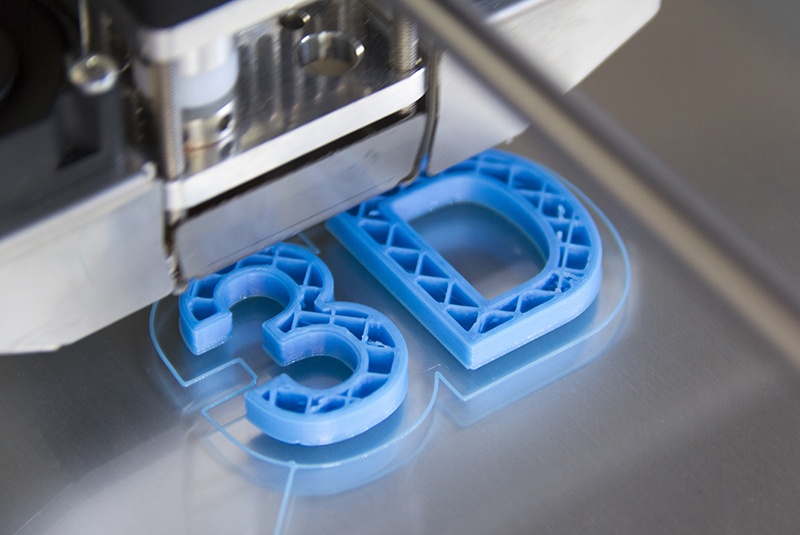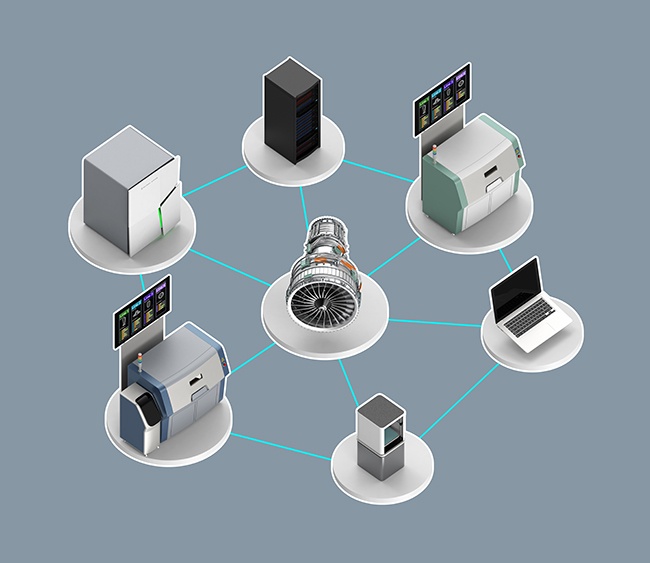13 Aug 2018
3D printing isn’t a “new” technology by any means, but it’s fast becoming more affordable and accessible.
For one, some of the historic licensing hurdles have been cleared from the field: According to TechCrunch, many of the key patents protecting pre-existing industrial printing processes are expiring.
In fact, MIT Technology Review recently listed 3D metal printing as one of the 10 breakthrough technologies of 2018.
But the proliferation of 3D printing has also led to a number of novel intellectual property (IP) issues. Notably, 3D printing has made it easy to duplicate patented objects — and difficult to take legal action against infringers.
As 3D printing enters the mainstream, it’s important for patent holders to understand and prepare for the challenges that 3D printing presents to the existing patent system.

WHAT IS 3D PRINTING?
3D printing — or, as it’s known in some contexts, “additive manufacturing” — is the process of creating three-dimensional structures by depositing layers of materials like plastic, rubber, or metal.
The physical object is “printed” based on a digital model, typically a computer-aided design (CAD) file. CAD files can be created in a number of different ways; for example, by scanning an object, or by designing the file yourself.
If you own a 3D printer, you can create complex components and devices — including human tissue, rocket engine parts, and, more controversially, a functional gun — even if you don’t have specialized skills or expensive tools.
As such, 3D printing makes it relatively easy for any individual or business to replicate most objects without authorization, even if the object is protected under IP law.
HOW 3D PRINTING AFFECTS THE PATENT SYSTEM
The patent-related issues presented by 3D printing are similar to some of the copyright issues created when people started using the internet to share books, software, music, and films. Just as a regular printer makes it easy to print a copyrighted book downloaded from the internet, a 3D printer makes it easy for just about anyone to manufacture a patented object at home.
Every time a 3D printer creates a patented innovation without permission from the patent holder, the owner or operator of the printer could be liable for patent infringement. But it can be quite difficult for the patent owner to detect or prove infringement.
To illustrate, here’s a likely patent infringement scenario: A hobbyist makes a CAD file of a patented object without the patent owner’s permission, and uploads the file online where other users can download it and print their own versions. To successfully enforce his rights, the patent holder would need to prove that someone (whether it’s the person who made the CAD file, the person who used the file to create the patented object, or both) is liable for either direct or indirect infringement.
But in 3D printing, the means of production is decentralized — the “manufacturer” is typically the end user who simply downloads a file and creates the object using a 3D printer.
In other words, the patented object itself is never sold. Here’s why this technicality makes it difficult to prove infringement.

CHALLENGES IN PROVING DIRECT INFRINGEMENT
Under U.S. law, a patent owner can hold another person liable for infringement when that person makes, uses, sells, offers to sell, or imports the patented invention into the United States without authorization.
With direct infringement, a single party’s product must meet all the limitations as claimed. So in a 3D printing case, direct infringement could arise when somebody creates the physical form of the invention.
HOLDING THE USER OF A 3D PRINTER LIABLE
If you’re a patent owner, you could theoretically hold the operator of a 3D printer liable for direct infringement.
But thanks to the mass proliferation of 3D printers, it could be extremely difficult to identify direct infringers. It could be unfeasible (or expensive at best) to track down and legally prove which individuals downloaded and used a particular CAD file.
The situation is fairly similar to digital music downloads: Even now, many individuals will illegally download music files, and ultimately it’s rare for the copyright holders to take action against specific individuals.
HOLDING THE OWNER OF A CAD FILE LIABLE
Alternatively, could you craft patent claims that would allow you to pursue the owner of a CAD file for direct infringement? Perhaps that’s an open question.
Generally, possessing a CAD file isn’t treated the same as making, using, or selling of the physical embodiment of the invention. So under current law, it might be impossible to prove direct infringement of a device claim based solely on the fact that someone made or distributed a CAD file.
So how should you approach drafting patent claims if you’re concerned about copyists reproducing your invention via 3D printing? Just like software companies will file claims to a “computer-readable medium” that stores instructions that perform a specific algorithm when executed by a processor, perhaps you could file claims to a “computer-readable medium” that stores instructions for a 3D printer to create a specific device.
This is a tricky area to navigate, so we recommend consulting an experienced patent professional for advice on your specific situation.
CHALLENGES IN PROVING INDIRECT INFRINGEMENT
With indirect infringement, two or more parties have created a product that meets all the limitations as claimed in the patent.
There are two types of indirect infringement: induced and contributory.
INDUCED INFRINGEMENT
You can be held liable for induced infringement if you knew about a patent, and knowingly caused another party to directly infringe the patent.
So in a 3D printing case, the patent holder would have to show that the inducer provided someone else with access to a 3D printing file, that the inducer knew the file would create the patented object, and that the latter person then used the file to print the patented object.
But that patent holder would face the following challenges:
- Identifying the entity who provided access to the file online. Pursuing legal action is contingent on your ability to track down the inducer.
- Finding out whether the entity actually used the file. Some files are only viewed but never used, and you can’t establish infringement against someone who only possesses the file.
- Taking action if the file is printed in a country not covered by the patent. In this case, you may have extremely limited legal recourse.
- Taking action against people who don’t know that the invention is patented. Proving induced infringement is different from, say, copyright infringement cases involving music. With the latter, there’s no requirement that the alleged infringers knew the music is copyrighted. But with the former, if you can’t prove the alleged infringers knew about the patent, then you don’t have a case for induced infringement.
CONTRIBUTORY INFRINGEMENT
You can be held liable for contributory infringement if:
- You knowingly provided a component that is especially made or adapted to infringe a patent;
- The component doesn’t have any other substantial non-infringing use; and
- The component is used as a material part of a final system or activity that directly infringes the patent.
It’s doubtful that someone could be held liable for contributory infringement of a device claim for simply providing a CAD file. That’s because the digital representation of a device (i.e. the CAD file) doesn’t actually constitute a component of the device. It’s possible to envision the CAD file as the equivalent of a chemical catalyst — in other words, it’s not a part of a whole.
Still, there’s at least an argument that it should be considered a component for purposes of contributory infringement. But that’s not an established legal theory of contributory infringement at this point.
WHAT STEPS CAN YOU TAKE TO PROTECT YOUR INVENTIONS?
Navigating 3D printing issues within the current patent system can be fairly complicated. Some interesting cases are bound to hit the courts soon, and we’ll have to see how things play out over time!
But for now, if you hold valuable patented technology, you need to start developing a robust strategy for dealing with 3D printing issues that extends beyond pursuing legal action against infringers.
For example, you could create a licensing model, or implement strong internal security measures within your business.
You also need to engage a patent professional who can help you draft robust claims that cover as many different angles of the device and its manufacture as possible, and to design a long-term strategy that accounts for these kinds of industry developments.
Henry Patent Law Firm can help you with your filing strategy. Contact us now.

Michael K. Henry, Ph.D.
Michael K. Henry, Ph.D., is a principal and the firm’s founding member. He specializes in creating comprehensive, growth-oriented IP strategies for early-stage tech companies.

